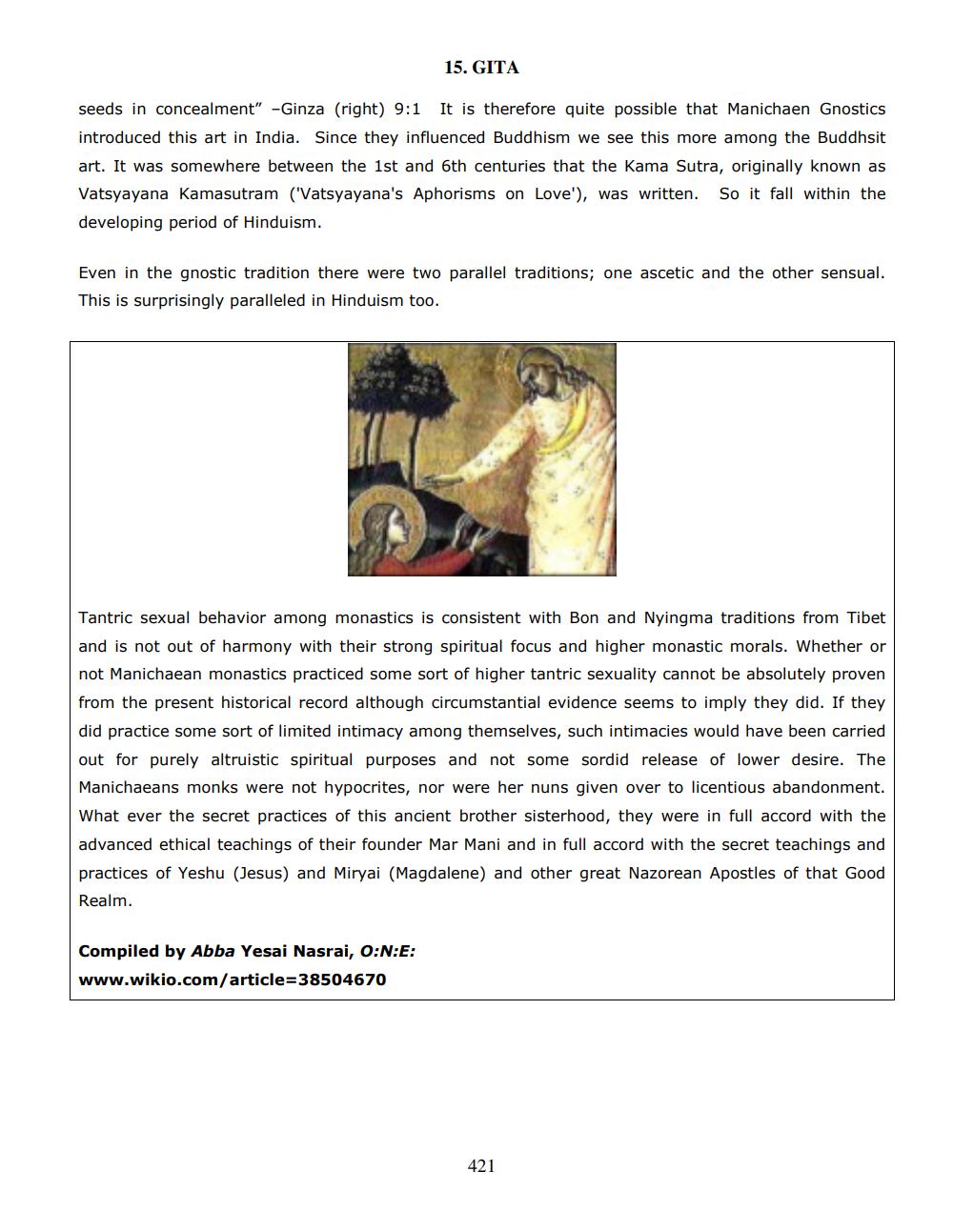________________
15. GITA
seeds in concealment" -Ginza (right) 9:1 It is therefore quite possible that Manichaen Gnostics introduced this art in India. Since they influenced Buddhism we see this more among the Buddhsit art. It was somewhere between the 1st and 6th centuries that the Kama Sutra, originally known as Vatsyayana Kamasutram ("Vatsyayana's Aphorisms on Love'), was written. So it fall within the developing period of Hinduism.
Even in the gnostic tradition there were two parallel traditions; one ascetic and the other sensual. This is surprisingly paralleled in Hinduism too.
Tantric sexual behavior among monastics is consistent with Bon and Nyingma traditions from Tibet and is not out of harmony with their strong spiritual focus and higher monastic morals. Whether or not Manichaean monastics practiced some sort of higher tantric sexuality cannot be absolutely proven from the present historical record although circumstantial evidence seems to imply they did. If they did practice some sort of limited intimacy among themselves, such intimacies would have been carried out for purely altruistic spiritual purposes and not some sordid release of lower desire. The Manichaeans monks were not hypocrites, nor were her nuns given over to licentious abandonment. What ever the secret practices of this ancient brother sisterhood, they were in full accord with the advanced ethical teachings of their founder Mar Mani and in full accord with the secret teachings and practices of Yeshu (Jesus) and Miryai (Magdalene) and other great Nazorean Apostles of that Good Realm.
Compiled by Abba Yesai Nasrai, O:N:E: www.wikio.com/article=38504670
421




